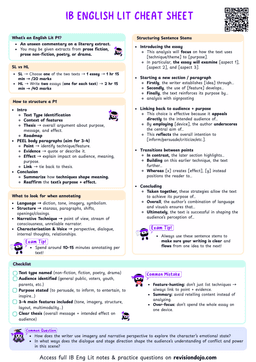Writers Build Characters to Build Meaning
Characterization
Characterization is the way a writer reveals a character’s personality, thoughts, and relationships.
- We come to understand characters not just by what we're told, but by what we observe: how they speak, act, think, and interact with others.
- These details help readers infer what kind of person they are.
- Writers build characters using different techniques.
- These reveal personality, motive, and relationships, often without telling us directly.
Methods of Characterization
Direct Description
Direct description
The narrator or another character directly tells the reader what someone is like, describing their looks, personality, background, or motivations.
- This gives us a shortcut to understanding the character, a starting point before we interpret deeper traits.
- This type of characterization often frames how we’re supposed to view the character.
- It can set up expectations or create contrast with what they actually do later.
- “He was a tall, brooding man with a perpetual scowl.”
- Ask: Is this description reliable? If it comes from another character, their opinion may be biased.
- Look at how the description is worded: are there loaded words (e.g., “brooding,” “scowl”) that signal mood or tone?
- Consider if the character lives up to this description or if the writer is setting us up for irony.
Check if the character lives up to the description, or if the writer is setting us up for a twist.
Actions
- What characters do often says more about them than what they say.
- Actions reveal priorities, values, and sometimes contradictions.
- Readers trust behavior more than claims.
- Writers often use actions to hint at inner conflicts or reveal growth across a story.
A character who silently fixes a stranger’s broken umbrella might be quietly compassionate, even if they seem gruff in conversation.
- Track behavior across the text, do they change over time? Stay consistent? Betray their words?
- Pay attention to small, quiet choices (e.g., who they comfort, avoid, or help). these often reveal deep traits.
- Ask: What does this action cost them? Sacrifices often signal core values.


